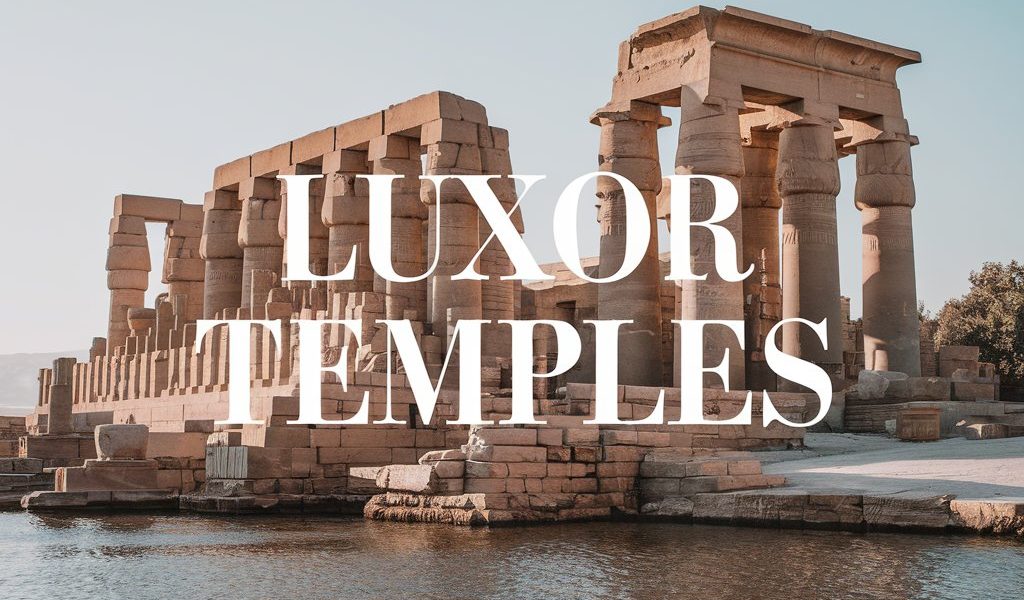Luxor Temples
Discover the Majestic Luxor Temples
Luxor, often referred to as the “world’s greatest open-air museum,” is a city steeped in history and grandeur. Located in southern Egypt, Luxor is home to some of the most iconic and well-preserved ancient temples. These architectural marvels stand as testaments to the grandeur of ancient Egyptian civilization and are a must-visit for travelers. Here’s everything you need to know about the Luxor Temples for your next Egyptian adventure.
A Brief Overview of Luxor Temples
The Luxor Temple, located on the east bank of the Nile River, is one of the most significant ancient structures in Egypt. Built around 1400 BCE during the New Kingdom, it was primarily dedicated to the Theban Triad: the gods Amun, Mut, and Khonsu. Unlike other temples in Egypt, Luxor Temple was not constructed to honor a single god or pharaoh but was a site of ceremonial and religious significance.
Connected to Karnak Temple by the Avenue of Sphinxes, this temple played a central role in the annual Opet Festival. During this festival, statues of the gods were transported along the Nile to Luxor Temple, symbolizing the renewal of kingship and divine harmony.
Highlights of Luxor Temple
Grand Entrance (Pylon):
The massive pylon at the entrance was built by Pharaoh Ramses II and is adorned with intricate carvings depicting his military victories.
Avenue of Sphinxes:
A 2.7-kilometer-long pathway lined with sphinx statues connects the Luxor and Karnak temples. This avenue was recently restored and is a breathtaking sight to behold.
Colonnade of Amenhotep III:
A series of majestic columns that create an imposing corridor leading to the inner sanctuaries.
Sanctuary of Alexander the Great:
A chapel built by Alexander the Great, showcasing the temple’s continued use during the Greco-Roman period.
Luxor Obelisks:
Originally, two obelisks stood at the entrance; one remains in Luxor, while the other was gifted to France and now stands in Paris’ Place de la Concorde.
Visiting Luxor Temple
- Best Time to Visit: Early morning or late afternoon to avoid the midday heat and enjoy stunning lighting for photography.
- Ticket Prices: Entry fees typically range between $8 to $10 (subject to change). Discounts may be available for students and children.
- Opening Hours: Daily from 6:00 AM to 10:00 PM, with nighttime visits offering a unique illuminated view of the temple.
- Guided Tours: Enhance your experience with a knowledgeable Egyptologist who can share fascinating insights about the temple’s history and symbolism.
Luxor Temple: A Gateway to More Adventures
While Luxor Temple is an incredible site on its own, it is part of a broader Luxor experience:
- Karnak Temple Complex:
- Located just 3 kilometers away, Karnak is a vast complex of sanctuaries, pylons, and obelisks.
- Valley of the Kings:
- Across the Nile on the west bank lies the burial site of Egypt’s New Kingdom pharaohs, including the tomb of Tutankhamun.
- Luxor Museum:
- A modern museum showcasing artifacts discovered in the area, including statues and relics from Luxor Temple.
- Sunset Felucca Ride:
- End your day with a peaceful sail along the Nile while soaking in the views of Luxor.
Why Choose Noga Tours for Luxor Temple Tours?
At Noga Tours Egypt, we offer personalized, private tours to explore the wonders of Luxor Temples. With experienced Egyptologist guides, comfortable transportation, and flexible itineraries, we ensure a memorable and hassle-free experience. Whether you’re a history enthusiast, a photographer, or simply a curious traveler, our tours cater to all your needs.
Book your Luxor Temple tour today and immerse yourself in the grandeur of ancient Egypt with Noga Tours.




